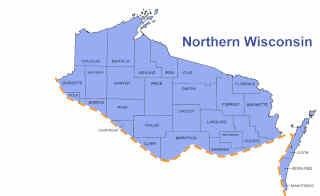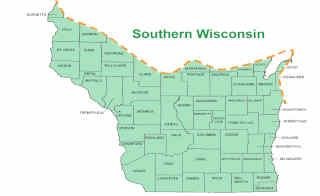Cover crop species recommendations change depending on where you are. The map below is divided between Northern and Southern Wisconsin – click one of the maps below to view the recommendations for that area.


Northern Wisconsin Cover Crop Options
Small grains / grasses
Cereal rye is the most reliable option for seeding grass cover crops after October 1st. If able to seed prior to October 1st, triticale is another grass cover crop option. With sufficient snow cover, both cereal rye and triticale will survive the winter and require termination in the spring. Triticale has higher feed quality than cereal rye. Therefore, for dairy operations looking to harvest the cover crop in the spring, triticale may be preferable. If harvesting the cover crop as a forage, significant attention should be paid to harvest restrictions of herbicides used during the previous two growing seasons.
Brassicas
Due to limited time for establishment and growth, it is not recommended to plant any of the brassicas after soybeans. There is not enough growing degree days left in the season to provide any cover crop benefits.
Legumes
Due to limited time for establishment and growth, it is not recommended to plant any of the legumes after soybeans. There is not enough growing season for them to develop nodules and fix nitrogen.
Southern Wisconsin Cover Crop Options
Small grains / grasses
Cereal Rye and triticale are both cover crops that can be planted well into October in Southern WI. Both will survive the winter and require some management to terminate them in the spring. Rye is more winter hardy than triticale so for very late planting dates, rye is preferable. Triticale has higher feed quality than rye so for dairy operations looking to take a spring forage cut, triticale may be preferable. If harvesting the cover crop as a forage, significant attention should be paid to harvest restrictions of herbicides used during the previous two growing seasons.
Other grasses, such as annual ryegrass. oats, barley are generally not recommended for planting after soybeans because they will winterkill and there are not sufficient enough growing degree days after soybean harvest for these cover crops to produce enough residue to protect the soil in the spring. However, if these grasses are planted during the soybean growing season, they may be options. Please see the aerial seeding page to read more about this option.
Source : wisc.edu